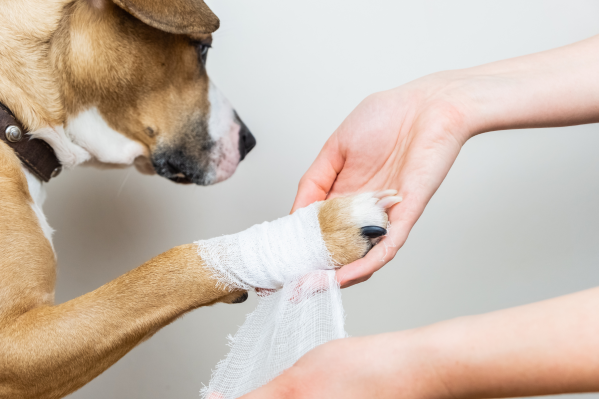Summertime means more campfires, warmer air, and in the western part of the country, dry season. And with all this comes wildfires.
Wildfire season brings with it a high risk of burn injuries. As pet parents, it's important to understand burns and the various treatments available, both at home and by your veterinarian.
Different types of burn injuries
To start, there are four classifications of burns, grades 1 to 4. A grade 1 burn is superficial, just the outer layers of skin. Grade 2 is partial thickness, so not down to the germal layer of the skin. Grade 3 is full thickness, through all layers of skin. Grade 4 is through internal tissue, and is the most severe.
How to treat a grade 1 burn
Grade 1 burns can be treated mostly at home. Grade 1 burns blister and rarely get infected if kept clean. You can clean with just soap and water if the injured area is covered in dirt.
Grade 1 burns are treated topically with silver sulfadiazine cream. Silver sulfadiazine is antibacterial and keeps all tissue under the cream moisturized. You can cover a grade 1 burn with a light bandage if your dog is licking at it, but in most cases, it won't be necessary.
How to treat a grade 2 burn
Grade 2 burns and above should be treated by a veterinarian. Any partial thickness or full thickness burn is prone to infection.
A grade 2 burn is treated by removing the dead tissue around the burn to get a clean edge. It's then bandaged depending on the size of the burn—this could be a wet to dry bandage or a padded bandage with silver sulfadiazine cream or other antibacterial cream. A wet to dry bandage means that the padding over the wound is wet with sterile water to remove pus or other debris from the wound. Wet to dry bandages have to be changed daily, so some pets are hospitalized or brought back daily. Oral antibiotics are also typically used as well as some form of pain medicine, typically an anti-inflammatory.
How to treat a grade 3 burn
Depending on the size of the burn, grade 3 burns can be difficult to treat in a general hospital because they are full thickness. At this point, you need to care for exposed muscle and subcutaneous tissue. In a smaller burn, a veterinarian will complete the above process, remove dead tissue, and get a clean edge to the wound. If the injury is small enough, they may be able to close with remaining skin, but it will most likely will need to be treated as an open wound.
Again, wet to dry bandages, silver sulfadiazine cream, and oral medications will be administered. Most grade 3 burns are going to be hospitalized for a few days to prevent sepsis (whole body infection) and to keep the pet hydrated with IV fluids. Most likely, there will be some sort of other damage from the fire to your pet such as smoke inhalation.
How to treat a grade 4 burn
Grade 4 burns must be treated by a veterinarian, and possibly even a specialist. This is going to require months of treatment both in hospital and at home. Even a smaller grade 4 burn is critical.
Every grade 4 burn is going to require surgical intervention, skin grafts, and hospitalization. Suffice it to say, if your dog or cat has a grade 4 burn, you're going to get to know your vet and the staff very well.
Other treatments for burn injuries
There are also some new ways to treat burns that not every vet clinic has access to. These include hyperbaric oxygen therapy, ozone therapy, and Phovia treatment, in addition to new technologies being developed every day.
Hyperbaric oxygen therapy (HBOT) and ozone the therapy are the same—oxygen in a higher concentration is supplied to the tissues that are burned. HBOT is done under pressure that allows more oxygen to the tissues. Ozone is an unstable form of oxygen that can be injected around a wound, applied in an ointment, or as a liquid. Phovia is a new treatment using a special gel with an ultraviolet light (phoviausa.com). Not every clinic has these capabilities, and these are adjunct therapies that are not necessary, but may help pets heal more quickly.
If you're concerned that your pet has suffered a burn and aren't sure about next steps, the Pawp team is here to help 24/7—no appointment required.
